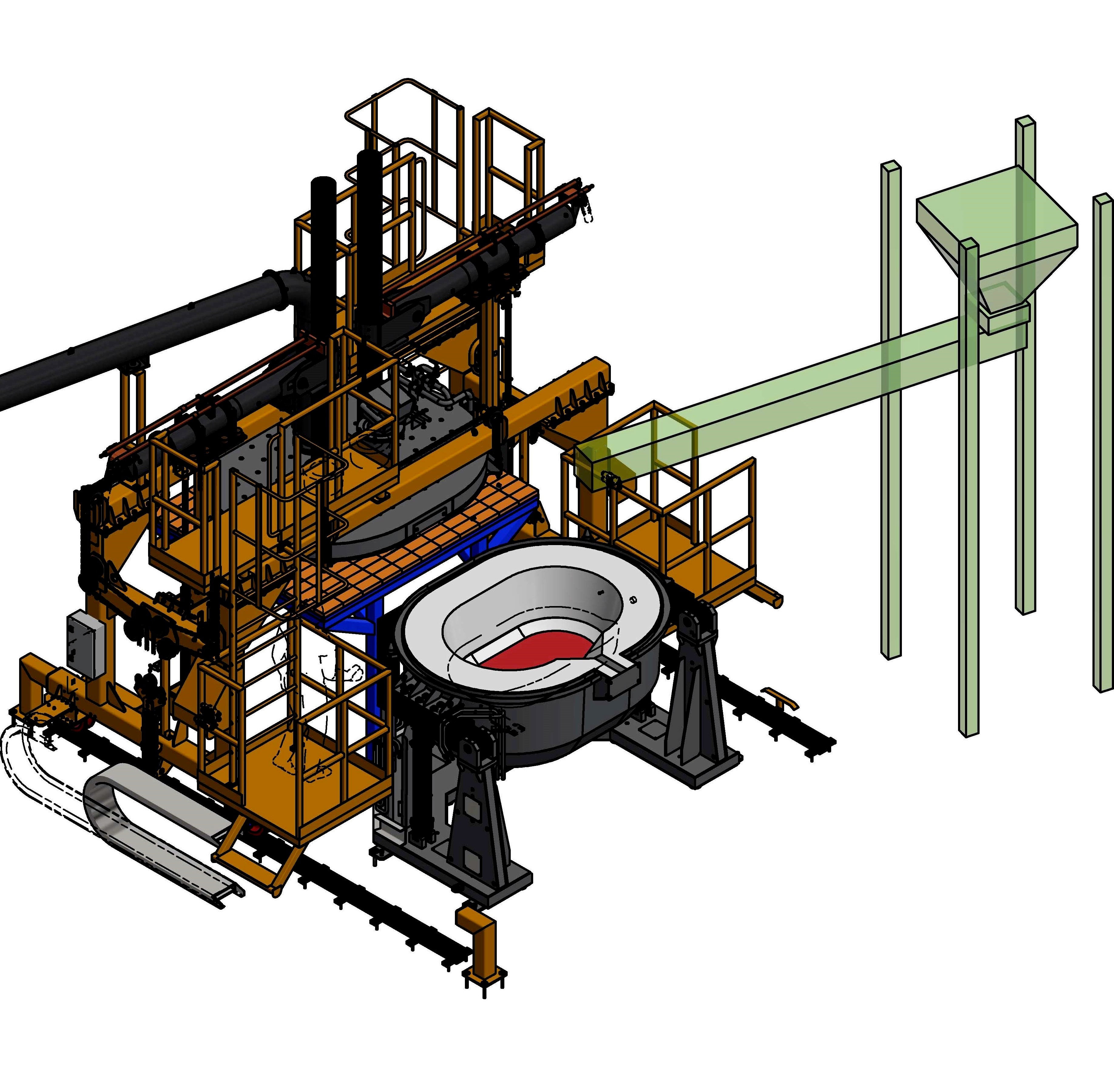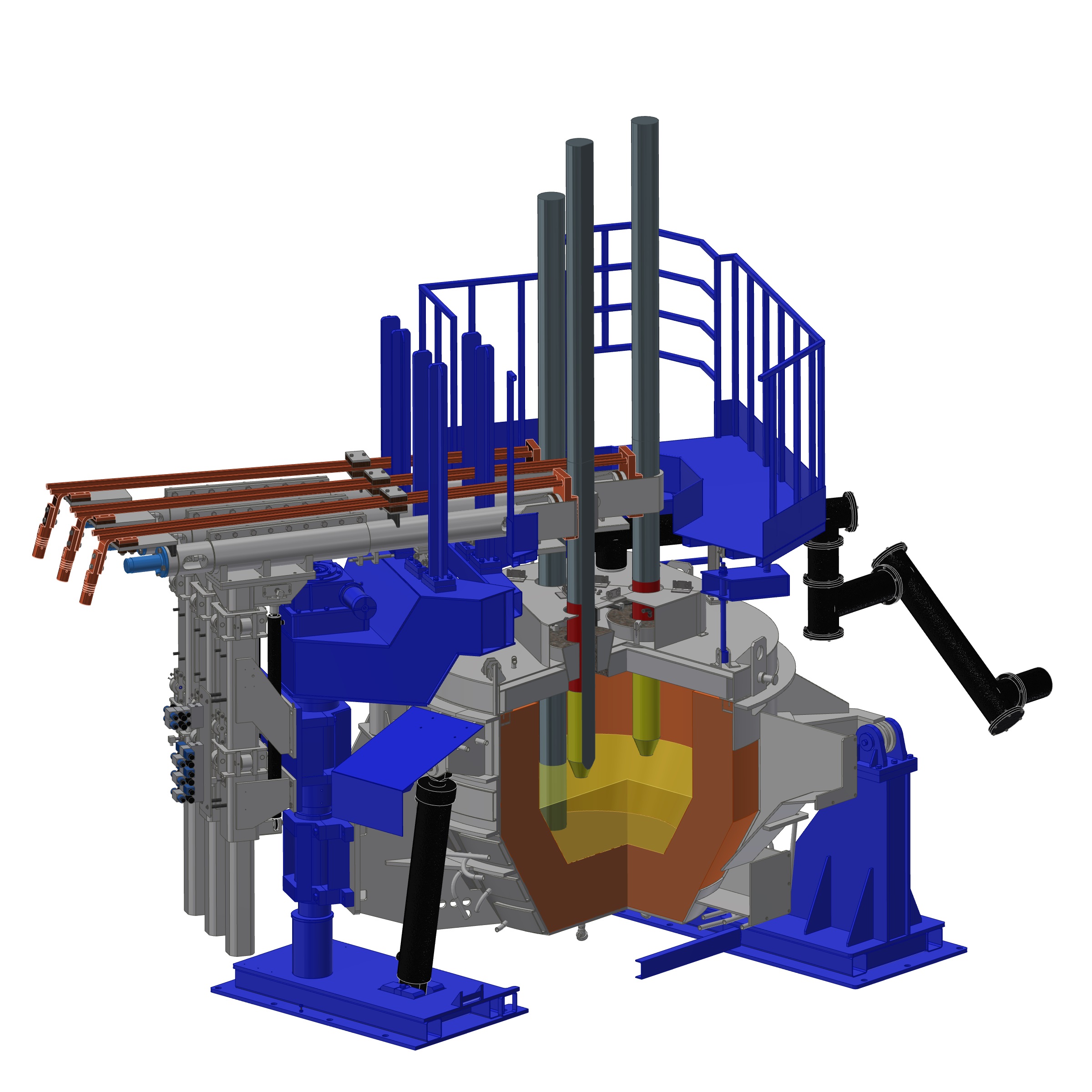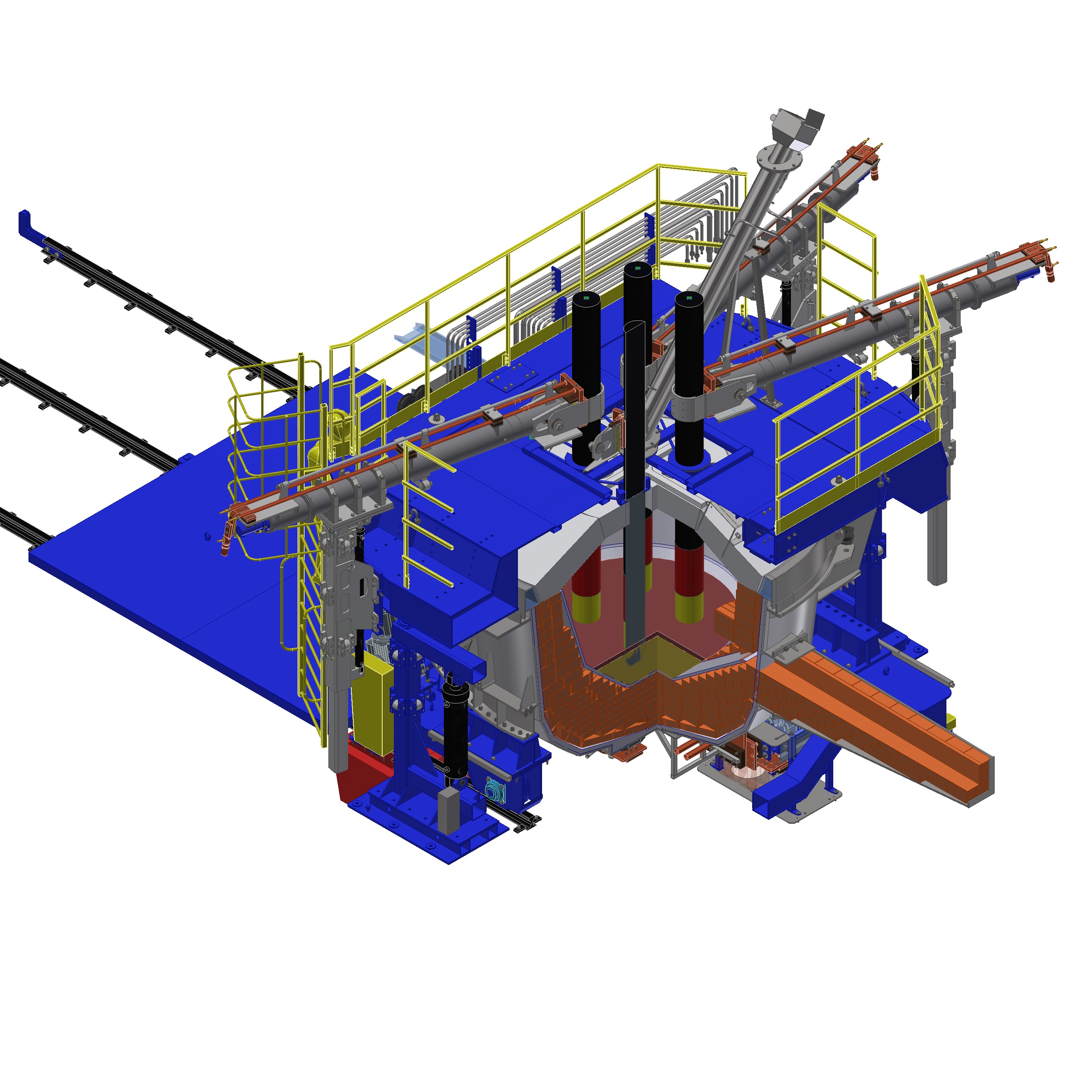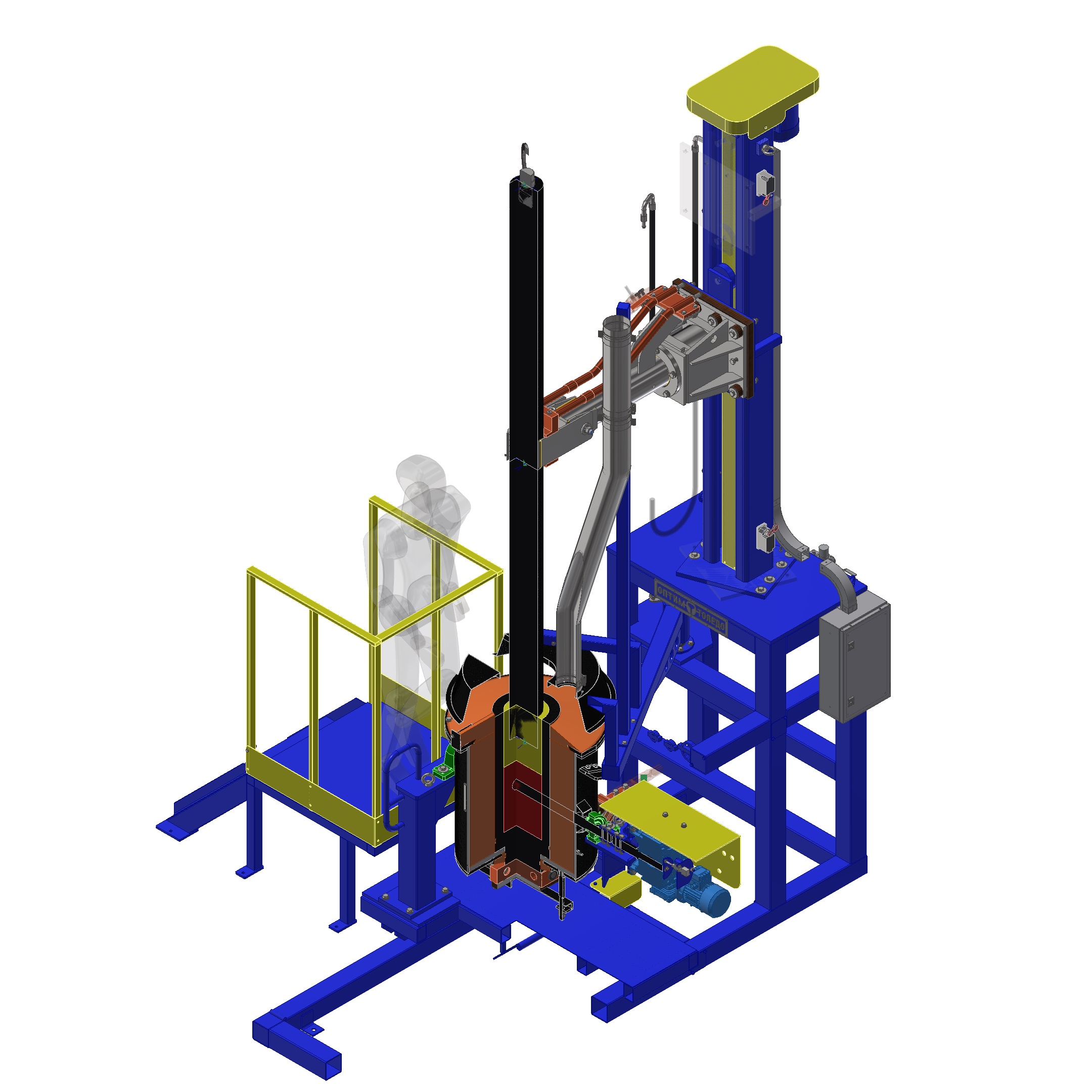Direct-current electric arc furnaces DC-EAF (DPPT)
Advantages of using DC-EAF (DPPT):
- lower amount of dust and gas emissions in the process of melting, compared to EAF;
- improvement of working conditions of smelters due to reduction of noise and dust in the working area of the furnace, compared to EAF;
- a wider range of smelting charge (metals, slags, scraps, chips, ore materials, etc.), compared to induction furnaces;
- lower burn rate of alloying elements, compared to EAF;
- high quality of melted metals and alloys;
We offer to your attention DC-EAF developed and produced by us, with different combinations of current supply, and different design solutions:
Our furnaces are certified for use in hazardous production facilities.
To receive technical and commercial proposal, please download and fill in the questionnaire and send it to us by e-mail: info@optim-toledo.com
DC-EAF with one top and one bottom electrodes
Furnace with classical for DC-EAF scheme of current lead to the melted charge. Designed for operation in arc modes with open and closed arc.
The top electrode of such furnaces always has a negative polarity (cathode), and the bottom electrode is positive (anode).
In the design of the furnace, we use various bottom electrodes. Depending on the tasks, it can be a fully copper bottom electrode, a combined copper-steel electrode or a combined copper-graphite electrode.
We produce such furnaces with capacity from 30 to 1000 kg.

DC-EAF with two top electrodes
Using DC-EAF with two top electrodes it is possible to conduct arc or ore thermal melting.
Furnaces with capacity from 60 to 400 kg are made with oblong round or hexagonal bath, and furnaces with capacity from 400 and up to 3000 kg are made with a round bath.
Structurally, the furnaces can be designed and manufactured with different arches.

DC-EAF with two top electrodes and one bottom, or with a conductive lower shell
This furnace, as well as the furnace with two top electrodes, can conduct arc and ore thermal melting, moreover, the presence of the bottom electrode in the structure gives it additional capabilities. For example, it is possible to adjust the input power for each top electrode or to melt a higher bath, because when working with the hearth electrode, the melt will be heated over its entire height.
We produce these furnaces with a capacity of 60 to 400 kg with a hexagonal bath, and a capacity of 400 to 3000 kg with a round bath.
The furnace design allows to make power input according to the following schemes:
- 2 top electrodes (bottom electrode is off);
- 2 top and bottom electrodes;
- 1 top and bottom electrodes.

DC-EAF with three top electrodes
DC-EAF with three top electrodes is designed for ore thermal melting.
This furnace proved well on slag-cleaning melting of anticatalysts.
In this configuration, one of the three top electrodes is an anode and the total current of the two cathodes flows through it. For regular wear of the electrodes, we used a scheme for switching the anode "in a circle". In this scheme, each of the three top electrodes can be an anode.
The capacity of these furnaces is 60-100 kg.

DC-EAF with four top electrodes
DC-EAF with four top electrodes is designed for arc or ore thermal melting.
The furnace with four top electrodes can be optionally equipped with one or two bottom electrodes.
We produce these furnaces with different arches.
The capacity of these furnaces is from 1500 to 3000 kg.

Electroslag remelting furnaces (ESR) with permanent electrode for melting ferrous and non-ferrous metal chips, fine scraps and clippings
The furnace is designed for refining melting of ferrous and non-ferrous metal chips, fine scraps and clippings. Melting passes into lined or graphite crucible. The melt is drained into the mold through the drain notch by tilting the bath .
The capacity of these furnaces is from 100 to 250 kg on melt.
